2021 BCRA Online Seminars via Zoom
As a contribution to the 2021 International Year of Caves
and Karst (IYCK) , BCRA hosted a series of online seminars that emphasised the scientific
importance of caves and karst, and which described ways in which BCRA supports cave research. The
concept of monthly seminars was repeated in 2023.
, BCRA hosted a series of online seminars that emphasised the scientific
importance of caves and karst, and which described ways in which BCRA supports cave research. The
concept of monthly seminars was repeated in 2023.
Click/Tap a link or scroll on down.
List of the 2021 Seminars
#1 — 8 February 2021 ▼
One in a million: new insights into the Pleistocene fossil sequence from Westbury Cave, Somerset
With: Danielle Schreve, Professor of Quaternary Science, Royal Holloway University of London
Time: 8 February 2021, 19:30 GMT.
To Watch: see Joining via Zoom.
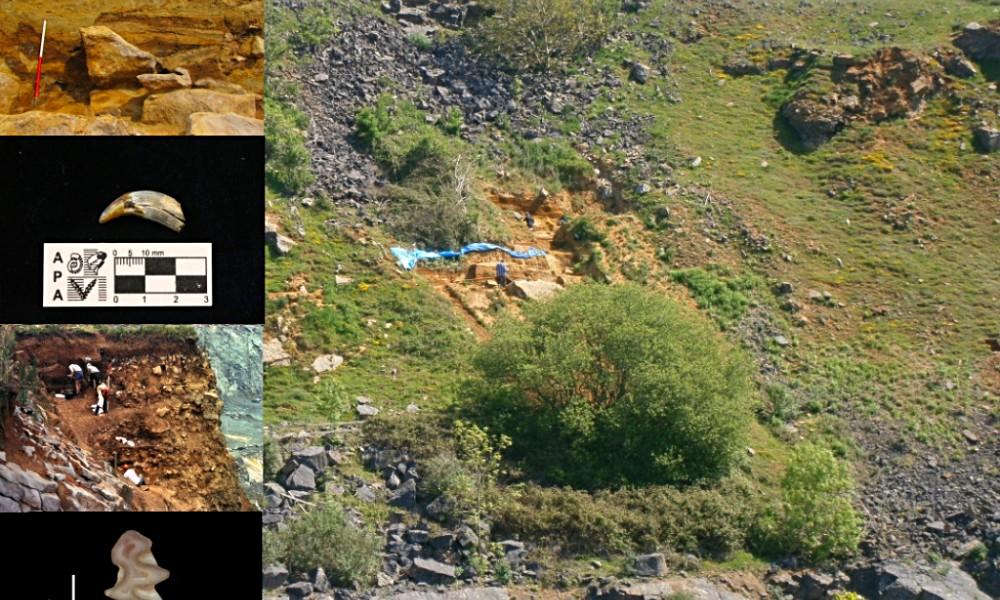
This talk will highlight the important resources contained within cave sediments and how
the information that can be gained from these sediments can aid our understanding of fast changing
palaeo-environments and palaeo-climates during glacial/interglacial episodes. Understanding the
past is key to our understanding of the future!
#2 — 8 March 2021 ▲ ▼
Castleton, Derbyshire: The world’s most complicated ‘simple’ karst hydrological system?
With: John Gunn, Honorary Professor, School of Geography, Earth and Environmental Sciences, University of Birmingham
Time: 8 March 2021, 19:30 GMT.
To Watch: see Joining via Zoom.
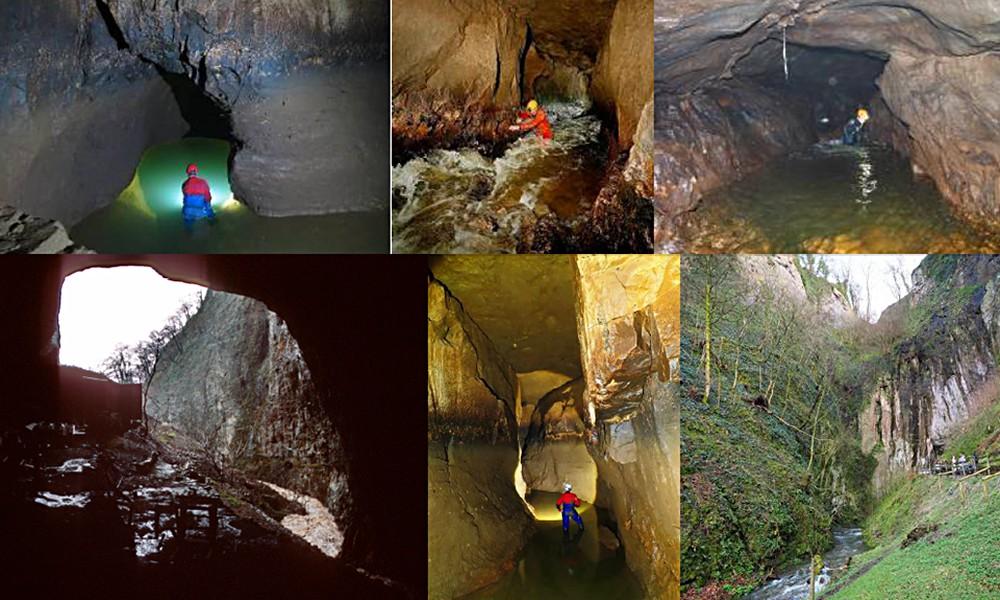
At first sight the Castleton karst seems similar to many other karst areas across the
globe with sinking streams that flow to springs, augmented en route by water percolating through
the limestone. However, the flow from the springs, and hence the discharge of the river fed by
them, exhibits remarkable temporal complexity which is thought to be greater than that in any
other karst system. This talk will provide insights into the complexity by examining the pathways
followed by water from surface to spring using water tracing, cave surveys and within-cave water
depth monitoring.
#3 — 12 April 2021 ▲ ▼
The Chalk: Britain’s most important karst region
With: Andy Farrant and Lou Maurice, British Geological Survey, Keyworth, Nottingham
Time: 12 April 2021, 19:30 BST.
To Watch: see Joining via Zoom.

When people think of important British karst regions, the Upper Cretaceous Chalk is not
the first area that comes to mind. Yet the Chalk outcrop has many karst features including
numerous stream sinks, dolines, dry valleys, a few caves and some of the largest springs in the
country. Whilst it may not be top of the list for sporting caves, the Chalk is by far the most
important British karst area in terms of value to society because groundwater from the Chalk
supplies millions of people in southern and eastern England with drinking water. In addition
streams fed by groundwater support many internationally rare habitats. This presentation will
examine the extent of karst in the Chalk and its role in groundwater storage and flow.
#4 — 10 May 2021 ▲ ▼
Aspects of cave history from the very ancient to the very recent
With: Linda Wilson, Honorary Research Fellow, University of Bristol; Graham Mullen, University of Bristol Spelæological Society
Time: 10 May 2021, 19:30 BST.
To Watch: see Joining via Zoom.
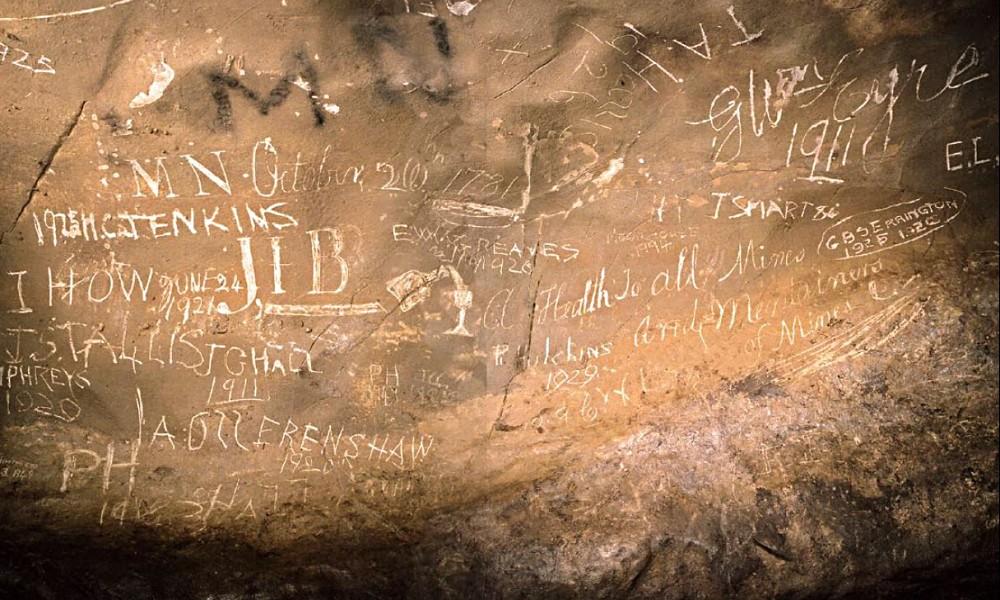
Aspects of cave history from the very ancient to the very recent.
(1) The Writing on the Wall: historic graffiti in caves and mines.
Speaker: Linda Wilson.
When graffiti in caves and mines is mentioned, as cavers, our
first reaction is usually strong disapproval quickly leading to a
conversation about cleaning methods, but there is another side to this often
emotive subject. Historic graffiti can play an irreplaceable part in our
knowledge of human interaction with caves and mines and this talk will
explore what can be learned from graffiti and will also look briefly at
recording methods.
(2) Knackers and gnomes and frightful shapes: the history and geology of Pen Park Hole, Bristol.
Speaker: Graham Mullan.
Pen Park Hole is a large natural cave located on the edge of
Southmead in Bristol. There is a very long and well-documented history of
exploration that dates back to 1669. The cave is formed in a buried ridge of
Carboniferous limestone, and is one of the finest examples of a hydrothermal
cave in the British Isles. This talk will provide a history of exploration
and an overview of its unusual geology and speleogenesis.
#5 — 14 June 2021 ▲ ▼
English cave SSSI — extent and monitoring
With: John Gunn, Andrew Hinde, Hannah Townley, David Webb, Linda Wilson
Time: 14 June 2021, 19:30 BST.
To Watch: see Joining via Zoom.
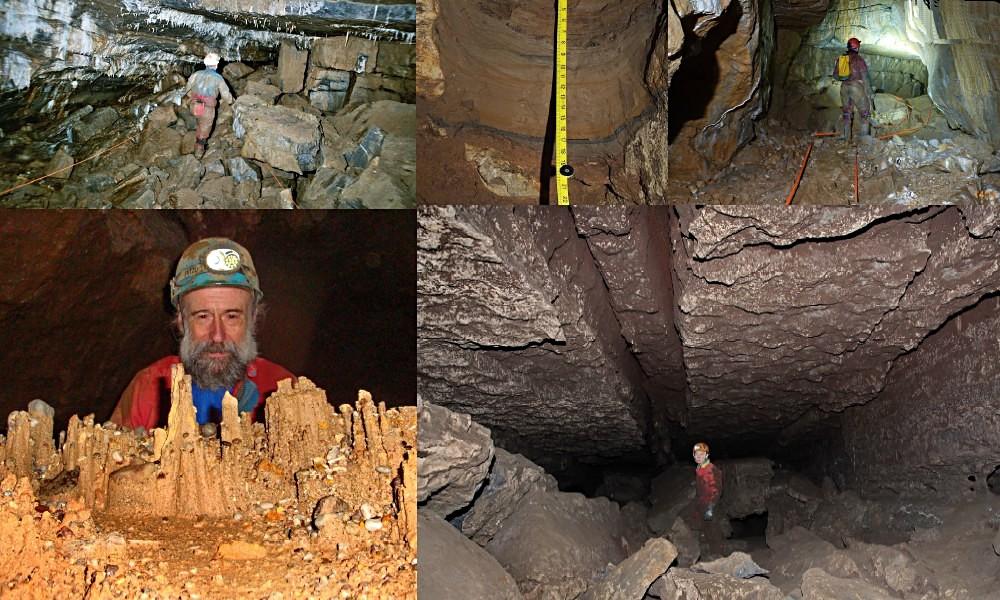
Around a third of English caves, and about three-quarters of cave passage lie
within 44 Sites of Special Scientific Interest (SSSI). These SSSI provide the highest
level of statutory protection for sites of geoscience or biological interest.
Natural England (NE) has a statutory responsibility for monitoring the condition
of SSSI and, in the case of surface sites, this is commonly undertaken by NE staff.
However, as few staff are qualified to carry out underground work, monitoring of
caves is largely undertaken by cavers on a voluntary basis. In this seminar Hannah Townley (NE)
will provide background on SSSI monitoring and John Gunn will outline the extent
of the cave SSSI network and will explain how the features for monitoring were chosen. There will
then be talks on SSSI monitoring in the three main regions: Northern England
(Andrew Hinde), the Peak District (John Gunn and David Webb) and
Mendip (Linda Wilson).
#6 — 19 July 2021 ▲ ▼
The British Cave Science Centre
With: Andi Smith, Matt Rowberry, Alastair Morgan and John Gunn
Time: 19 July 2021, 19:30 BST.
To Watch: see Joining via Zoom.

This seminar has been rescheduled from 12 July
The British Cave Science Centre (BCSC) is a unique open-access science facility
based at Pooles' Cavern, UK. The presentations in this seminar are from several speakers.
Andi Smith will give an overview of the aims and objectives
of the project. The other speakers are academic researchers using the BCSC or the datasets
produced by the project. Matt Rowberry will describe a six-month recording of anemometer
data (wind speed and direction) and will discuss how the data enables us to better understand
cave ventilation. Alistair Morgan will talk about his Masters-by-research project,
which is using drip water and modern calcite to understand phosphate dynamics within caves.
John Gunn will discuss atmospheric carbon dioxide concentrations in the cave,
looking at natural cycles
and how these are influenced by the operation of the show cave.
#7 — 9 Aug 2021 ▲ ▼
As Old as the Hills: The Chronology of Caves and Their Landscapes
With: Mike Simms, National Museums Northern Ireland
Time: 9 Aug 2021, 19:30 BST.
To Watch: see Joining via Zoom.
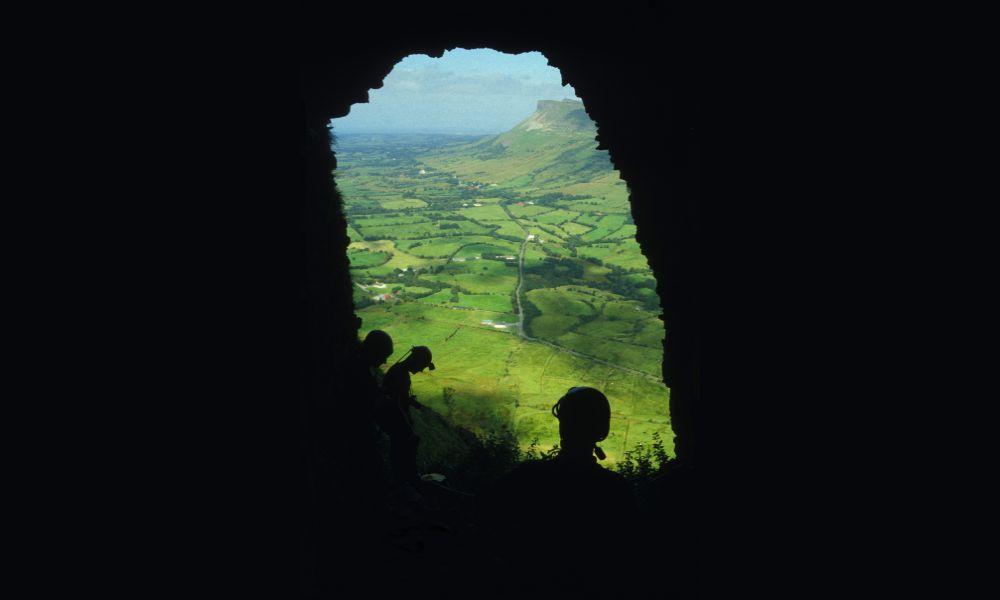
Caves, formed by streams draining into limestone from the surface, provide a unique
record of evolving landscapes by creating new underground drainage routes in response
to surface changes. Cave passages, and the sediments or animal remains that they contain,
are protected from weathering and erosion far longer than if they were on the surface.
Limestone caves present natural barriers to ordinary mortals but, for those willing to
tolerate the discomfort, they offer unparalleled opportunities for reconstructing, and
dating, the evolution of the landscapes with which they are associated. Many of the key
observations are simple to make – and to include on surveys – and can radically
change our views of how particular caves, and their associated landscape, have evolved
through time.
#8 — 13 Sep 2021 ▲ ▼
Cave Forensics: Reconstructing Cave Visitation and Past Climate
With: Lisa Baldini, Lecturer in Environmental Science, Teesside University
Time: 13 Sep 2021, 19:30 BST.
To Watch: see Joining via Zoom.

One of the most captivating qualities of caves are the intricate natural mineral sculptures
that adorn their interiors. These speleothems grow incrementally over thousands of years,
one drop of water at a time. Layers roughly as thick as a fingernail harden over the span of a
year and within them is captured a snapshot of the climate (temperature and precipitation) and
vegetation at the surface as well as activity within the cave. Modern cavers might grasp the top
of a stalagmite to hoist themselves up a chimney or to maintain three points of contact when
scrambling over uneven ground. Depending on conditions and cave traffic, the residue from their
touch may be preserved for the ages. If a stalagmite snaps as a result, so too will it lay in
broken repose for millennia. In the past, cave visitors and inhabitants used torches to light
their way. Evidence of more recent torch smoke can sometimes be seen as a black residue that blankets
the surface of speleothems. Within the speleothem layers, however, earlier visits over thousands
of years may be preserved. This talk will explore how cave scientists use the physical characteristics
and geochemistry of stalagmites to reconstruct past climate and cave visitation. Understanding
human-climate interactions in the past provides important perspectives for addressing current challenges.
#9 — 11 Oct 2021 ▲ ▼
Caves — Celebrating the International Year of Caves and Karst
With: Andy Eavis, Gina Moseley, John Gunn, Brendan Sloan
Time: 11 Oct 2021, 19:30 BST.
To Watch: see Joining via Zoom.

These four short lectures, first presented to a live audience at the the Royal Geographical Society
in mid-September, highlight the three IYCK themes: Explore, Understand and Protect. Andy Eavis
will introduce and present a brief update on the latest cave discoveries in the British Isles and worldwide.
Gina Moseley will give an overview of some underground science projects. John Gunn will
highlight the role of cavers in protecting and monitoring underground sites in British Sites of Special
Scientific Interest. Brendan Sloan will present an overview of the outstanding, but little publicised
work undertaken by the Cave Rescue Organisations.
#10 — 8 Nov 2021 ▲ ▼
The British Caving Library
With: Jenny Potts, BCRA Library Coordinator
Time: 8 Nov 2021, 19:30 GMT.
To Watch: see Joining via Zoom.

The aim of this seminar is to provide an insight into the British Caving Library including its history,
its book, journal, survey, and archive holdings, and its facilities, enquiries, website and future.
We will also cover how to access our services and make visits. We hope not just to provide information
but to stimulate discussion on how we might change or improve our services in the future.
#11 — 13 Dec 2021 ▲
Searching for early prehistory in British caves: recent work and new promise
With: Rob Dinnis
Time: 13 Dec 2021, 19:30 GMT.
To Watch: see Joining via Zoom.
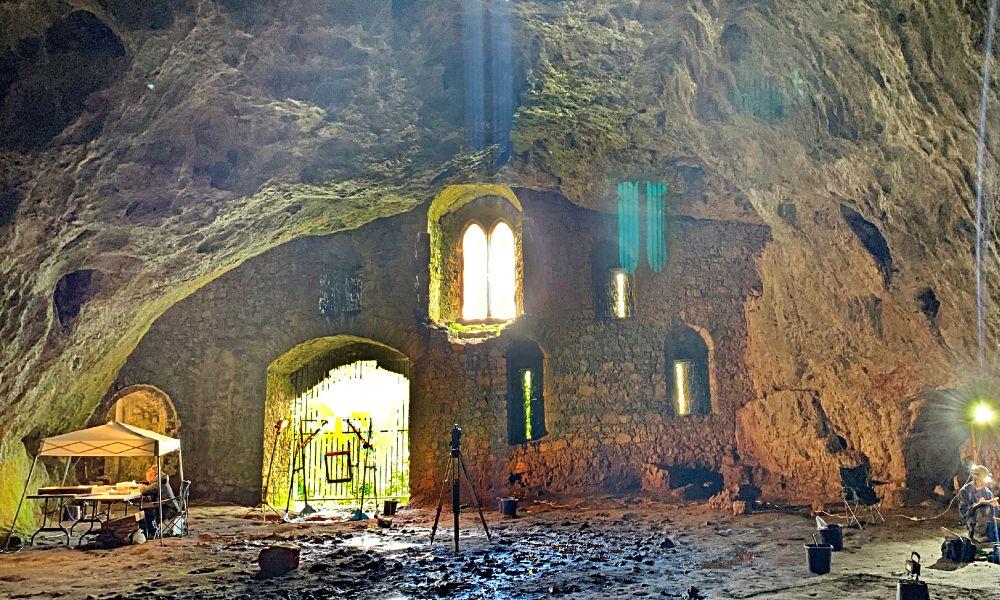
Britain's best known archaeological caves were largely or wholly excavated in the 19th and early 20th centuries.
These early digs answered scientific questions of the time but left very little intact archaeological deposits.
In the years since, new methods and new, higher-resolution archaeological questions mean that much more can now
be learned. However, the lack of intact early prehistoric deposits in British caves has hindered the application
of these new methods. This talk will outline some attempts to overcome these problems. To conclude, new results
from the promising site of Wogan Cavern are presented.
Using Zoom
See our latest seminars page for information about using Zoom
Seminars Archive
View talks given in 2021, 2022 (none), 2023, 2024.











